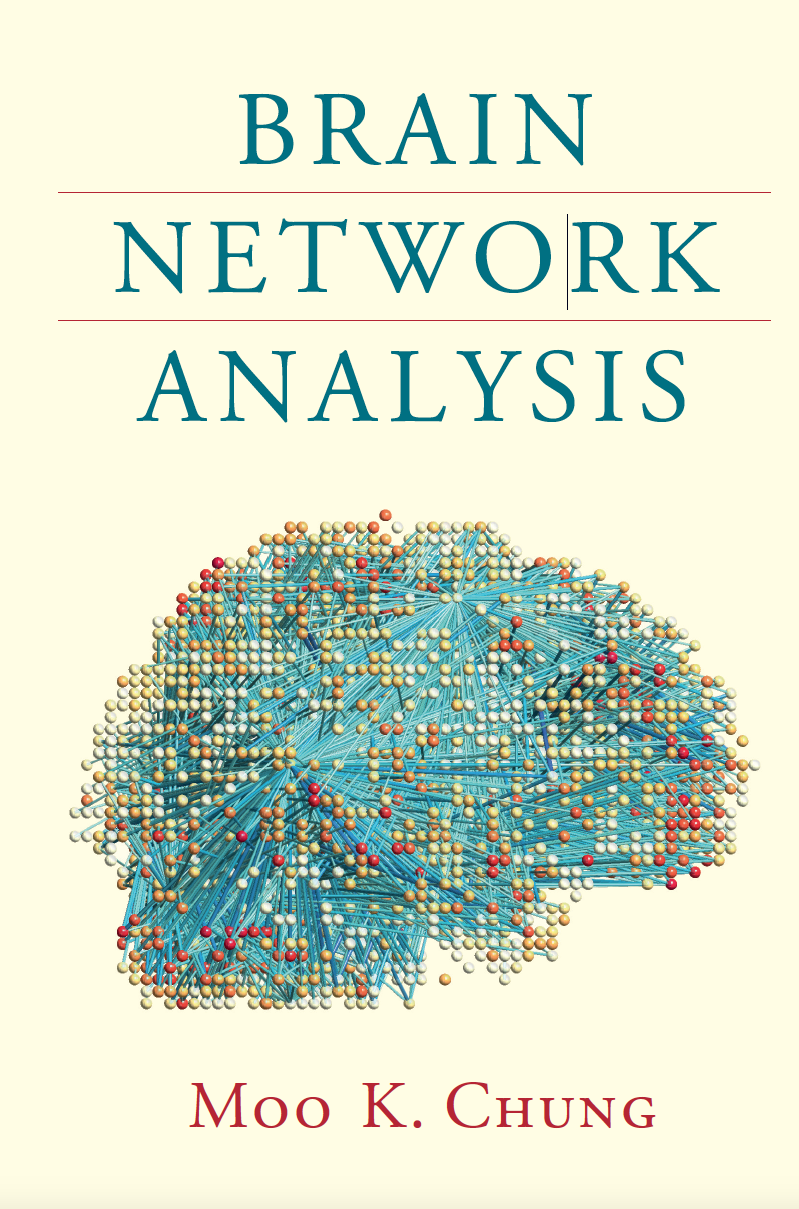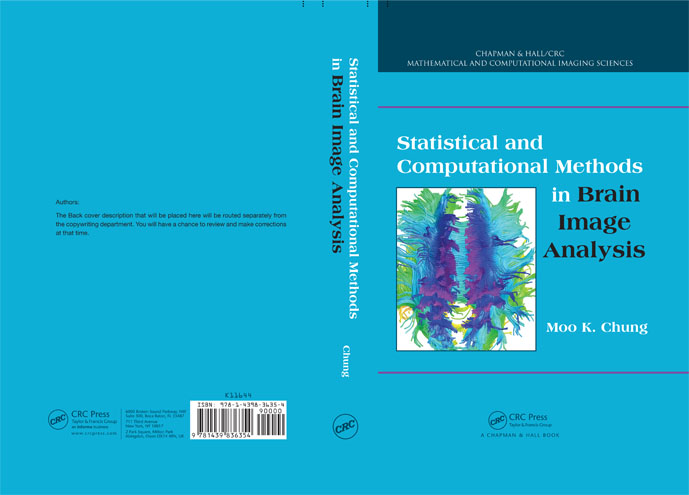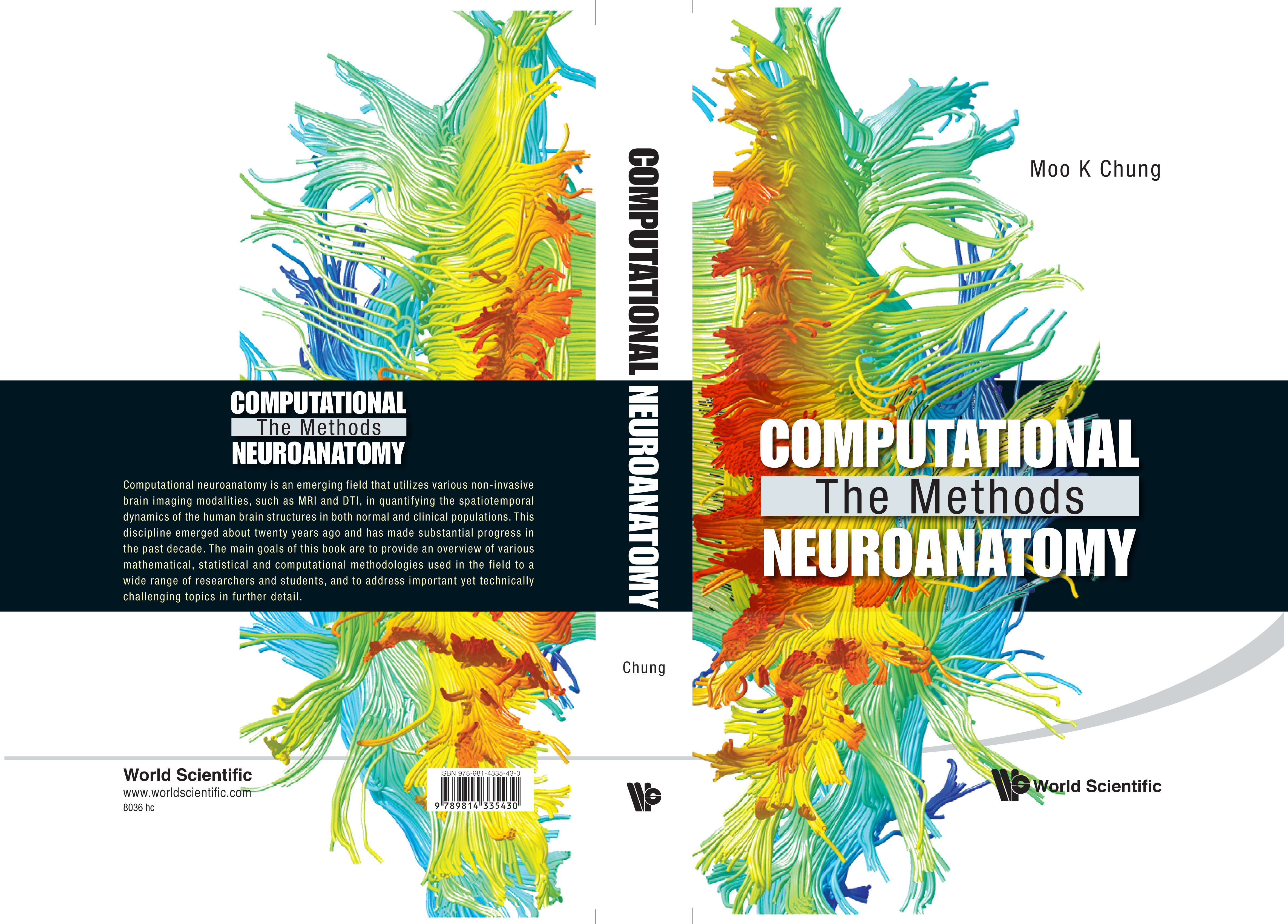Brain Network Analysis
Author: Moo K. Chung
Published in 2019 through Cambridge
University Press
330 pages.

This book serves as a coherent overview of various statistical and mathematical approaches used in brain network analysis, where modeling the complex structures and functions of the human brain often poses many unique computational and statistical challenges. This book fills a gap as a textbook for graduate students while simultaneously articulating important and technically challenging topics. Whereas most available books are graph theory centric, this text introduces techniques arising from graph theory and expands to include other different models in its discussion on network science, regression, and algebraic topology. Links are included to the sample data and codes used in generating the book's results and figures, helping to empower methodological understanding in a manner immediately usable to both researchers and students.
Statistical and Computational Methods in Brain
Image Analysis.
Author: Moo K. Chung
Published in 2013 through CRC
Press
416 pages

The massive amount of nonstandard
high-dimensional brain imaging data is often
difficult to analyze using current techniques.
This challenge in brain image analysis requires
new computational approaches and solutions. But
none of the research papers or books in the field
describe the quantitative techniques with detailed
illustrations of actual imaging data and computer
codes. Using MATLAB and case study data sets,
Statistical and Computational Methods in Brain
Image Analysis is the first book to explicitly
explain how to perform statistical analysis on
brain imaging data. The book focuses on
methodological issues in analyzing structural
brain imaging modalities such as MRI and DTI. Real
imaging applications and examples elucidate the
concepts and methods. In addition, most of the brain imaging
data sets and MATLAB codes are available on
the author’s website. By supplying the data and
codes, this book enables researchers to start
their statistical analyses immediately. Also
suitable for graduate students, it provides an
understanding of the various statistical and
computational methodologies used in the field as
well as important and technically challenging
topics.
Computational Neuroanatomy: The Methods
Author: Moo K. Chung
Published in 2012 through World
Scientific Publishing
420 pages.

Computational neuroanatomy is an emerging field that utilizes various non-invasive brain imaging modalities, such as MRI and DTI, in quantifying the spatiotemporal dynamics of the human brain structures in both normal and clinical populations. This discipline emerged about twenty years ago and has made substantial progress in the past decade. The main goals of this book are to provide an overview of various mathematical, statistical and computational methodologies used in the field to a wide range of researchers and students, and to address important yet technically challenging topics in further detail.
